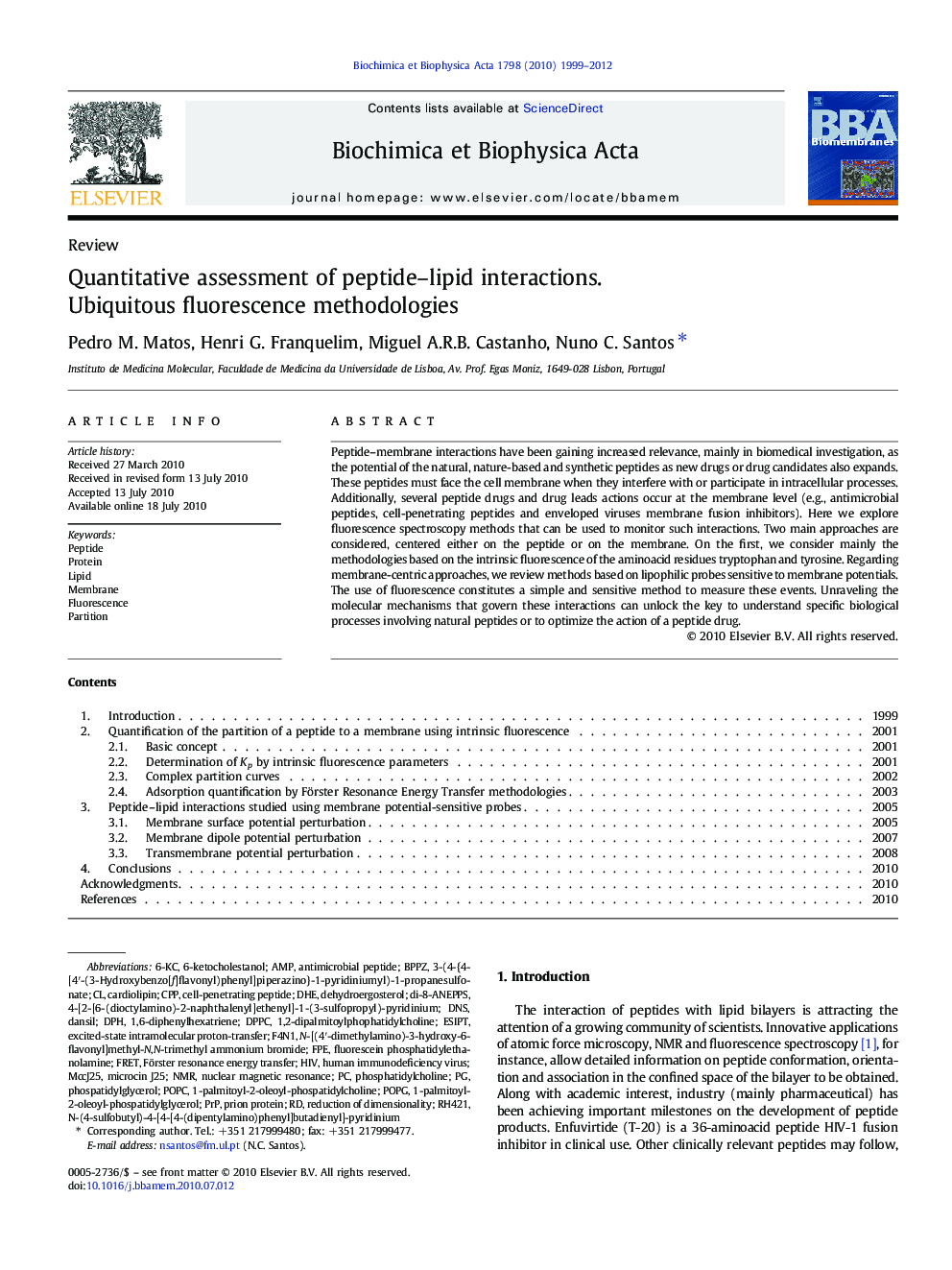| Article ID | Journal | Published Year | Pages | File Type |
|---|---|---|---|---|
| 1944664 | Biochimica et Biophysica Acta (BBA) - Biomembranes | 2012 | 14 Pages |
Peptide–membrane interactions have been gaining increased relevance, mainly in biomedical investigation, as the potential of the natural, nature-based and synthetic peptides as new drugs or drug candidates also expands. These peptides must face the cell membrane when they interfere with or participate in intracellular processes. Additionally, several peptide drugs and drug leads actions occur at the membrane level (e.g., antimicrobial peptides, cell-penetrating peptides and enveloped viruses membrane fusion inhibitors). Here we explore fluorescence spectroscopy methods that can be used to monitor such interactions. Two main approaches are considered, centered either on the peptide or on the membrane. On the first, we consider mainly the methodologies based on the intrinsic fluorescence of the aminoacid residues tryptophan and tyrosine. Regarding membrane-centric approaches, we review methods based on lipophilic probes sensitive to membrane potentials. The use of fluorescence constitutes a simple and sensitive method to measure these events. Unraveling the molecular mechanisms that govern these interactions can unlock the key to understand specific biological processes involving natural peptides or to optimize the action of a peptide drug.
